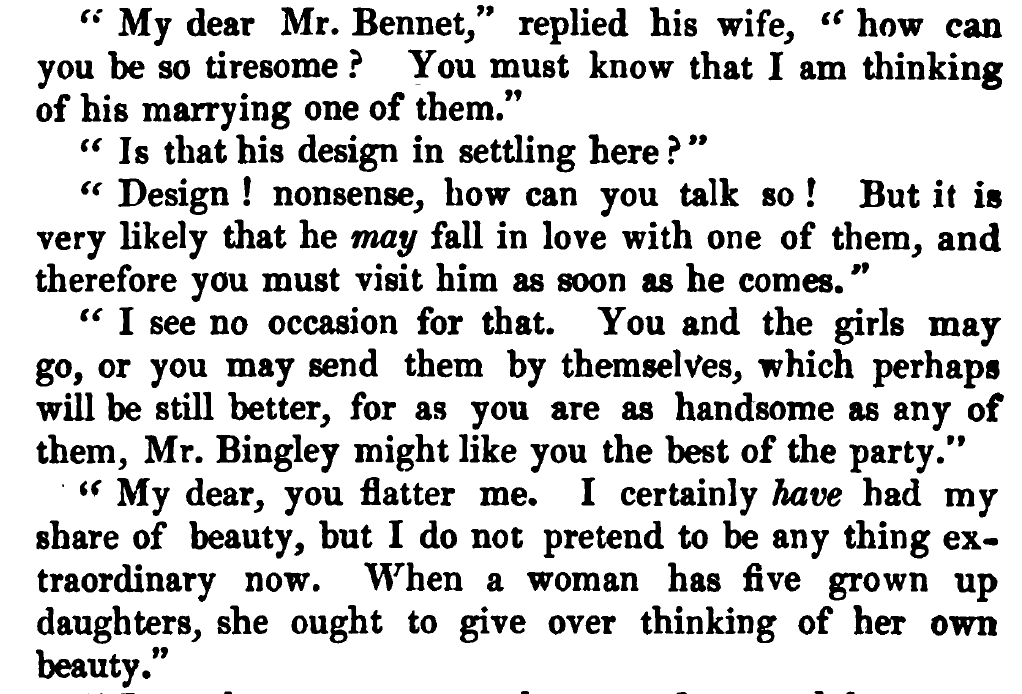Orthography of prosodic focus: The history
Language Log 2022-02-18
It's well known that Jane Austen's novels made extensive use of italics to mark prosodic focus. Here's the first example from Pride and Prejudice, which occurs in the eighth sentence of the work, on p. 2 of the 1813 first edition:
"Do not you want to know who has taken it?" cried his wife impatiently.
"You want to tell me, and I have no objection to hearing it."
This was invitation enough.
And there are two more examples just a few sentences later, in the same opening conversation. Here's an image from the 1853 edition, for which the scan is better quality:
"My dear Mr. Bennet," replied his wife, "how can you be so tiresome? You must know that I am thinking of his marrying one of them.
"Is that his design in settling here?"
"Design! nonsense, how can you talk so! But it is very likely that he may fall in love with one of them, and therefore you must visit him as soon as he comes."
"I see no occasion for that. You and the girls may go, or you may send them by themselves, which perhaps will be still better, for as you are as handsome as any of them, Mr. Bingley might like you the best of the party."
"My dear, you flatter me. I certainly have had my share of beauty, but I do not pretend to be any thing extraordinary now. When a woman has five grown up daughters, she ought to give over thinking of her own beauty."
A quick check of the Project Gutenberg plain text version suggest that there are 414 such uses of italics in the book as a whole.
Austen's use of italics has certainly been noticed before — and interpreted in (sometimes fantastical) detail, e.g. in R.A. Harris, "Social Definition in Pride and Prejudice: An exercise in Extensional Semantics", English Studies in Canada, 1991:
One very immediate function of italics is to support character personality: Mrs. Bennet stresses petulantly, her husband with ironic placation; Darcy stresses earnestly, Elizabeth playfully; Lady Catherine stresses to reinforce a majestic bearing that her blustering stresses belie.
Harris goes on to suggest that Austen's italics are an orthographic innovation:
Austen primarily reserves stress for function words, or high frequency, low information adverbs and adjectives (words like now, more, and most), items with little or no intensional capacity. This marks the more specific application of a typographical device widespread in eighteenth-century fiction. Fielding, for instance, and Fanny Burney, use italics for general emphasis, or to highlight place names and abstract properties, or for no apparent reason at all; Austen presents a limited set of very specific contrasts.
I've read somewhere that Austen's manuscripts use underlining in the places corresponding to italics in the printed versions. This makes sense — and suggests that the orthographic innovation was the response of editors and printers to a typographical difficulty, since I imagine that it was harder to typeset underlining than italics.
Anyhow, I have a question: Was Austen the first published writer to indicate prosodic focus in a systematic way, by whatever orthographical or typographical means? Are there earlier hand-written (English) documents, like letters, that indicate prosodic focus in some systematic way?
[h/t Martin Ho Kwan Ip]

